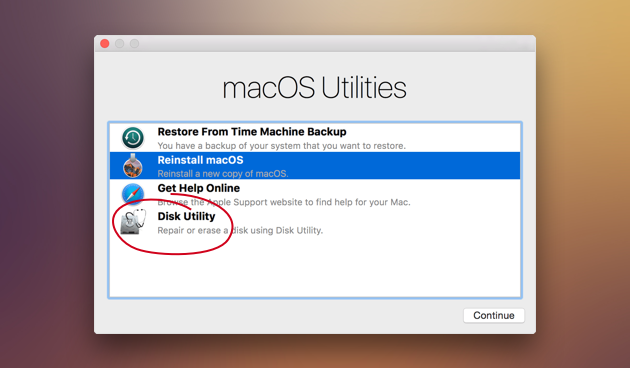
:max_bytes(150000):strip_icc()/FormatDiskUtilityYosemite-577aada95f9b58587592c02d.jpg)
- #DISK UTILITY MAC DISK IMAGE HOW TO#
- #DISK UTILITY MAC DISK IMAGE SOFTWARE#
- #DISK UTILITY MAC DISK IMAGE PASSWORD#
- #DISK UTILITY MAC DISK IMAGE PLUS#


#DISK UTILITY MAC DISK IMAGE PASSWORD#
Tip: Make sure to write down the password and store it in a safe place. Type an arbitrary password and then click Choose.Īnyone attempting to open the disk image file will first need to type in your password. Select either encryption option will put up a prompt asking you to enter and re-enter the password that will be used to encrypt and unlock the disk image.
#DISK UTILITY MAC DISK IMAGE PLUS#
The former option uses the Mac’s Journaled HFS Plus file format to protect the integrity of the hierarchical file system. OS X Extended (Journaled) or OS X Extended-Select either option if the disk will only be used with Macs.100, 500, 5000) will yield an audible alert warning you that the value is incomplete.Ħ) Click the Format menu and choose a format for your image file. You must manually type in the size of the image file: i.e. You can also add tags, if necessary, and click the arrow down button next to the Save As field in order to choose a folder on your Mac to save the DMG file in.Ĥ) In the Name field, enter the name that will appear on the Mac’s desktop and in the Finder sidebar after open the image file.ĥ) In the Size field, enter an arbitrary size for the disk image.
#DISK UTILITY MAC DISK IMAGE HOW TO#
How to create blank disk images with Disk Utilityġ) Open Disk Utility using Spotlight or directly from your /Applications/Utilities/ folder.Ģ) Choose File → New Image → Blank Image to get started.ģ) In the Save As field, type a new for your disk image file. This tutorial was brought to you because someone asked about it.
#DISK UTILITY MAC DISK IMAGE SOFTWARE#
For example, you may want to create blank disk images for storage.įurthermore, disk images can be used as a virtual disk for software distribution, to burn CDs or DVDs and so forth. In this step-by-step tutorial, you’ll learn how to create blank disk images in Disk Utility, at any size, with optional password protection, formatting options and more. These mountable disk images can be useful in a number of situations. dmg extension and appears, looks and behaves like any ordinary file, with one key exception: launching it prompts OS X to mount the volume on the desktop. Should you ever find yourself in the need to create blank disk images, OS X’s built-in Disk Utility is your friend.


 0 kommentar(er)
0 kommentar(er)
